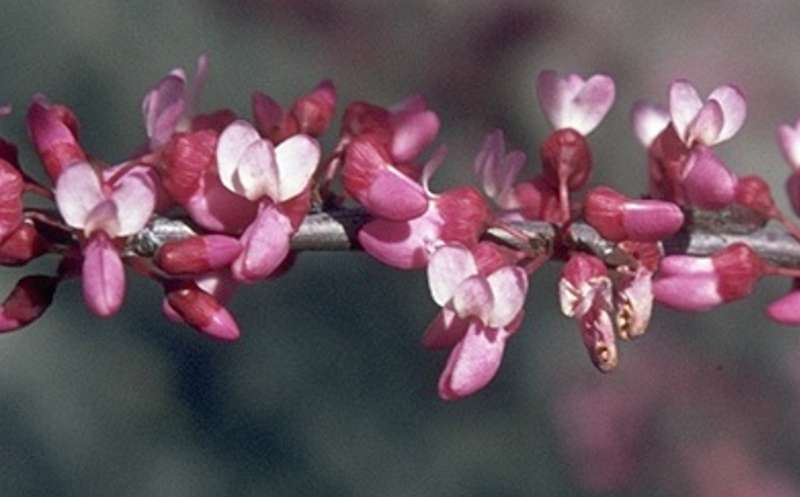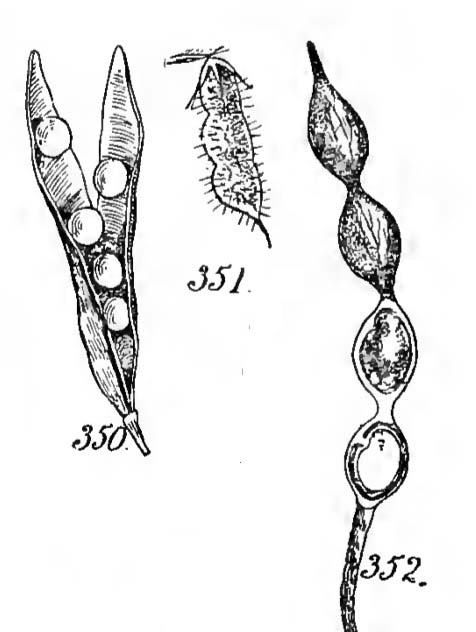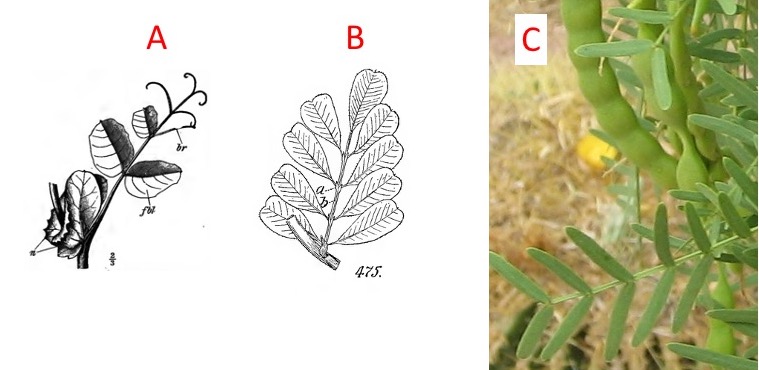The Fabaceae
The Fabaceae is the pea or bean family. An older name for the family is Leguminosae, and members of this family are often refered to as legumes.
Flowers:
The flowers vary by subfamily. There are three subfamilies of the Fabaceae, but you will only be responsible for recognizing one: the Papilionoideae. The flowers of this subfamily are the typical "pea flower". These flowers...
- are bilaterally symetrical
- have five petals: a banner (sometimes called a standard), two wings, and two petals fused together to form a keel

The other subfamilies are present in California. They include the
Caesalpinoideae, whose flower resembles the pea flower above, but whose banner is inside the wings, rather than outside. Western redbud (Cercis occidentalis) is in this subfamily. Note the position of the banner and wings.

The third subfamily, the Mimosoideae, has radially symmetrical flowers. It's members are mostly in tropical and subtropical regions, but California does have some. Prosopis (mesquite) is a member of this subfamily.

Fruits
The fruit of species in the Fabaceae is usually a legume. In some species it is a loment. (A loment is an elongate legume-like fruit that breaks into single-seeded sections.)

Leaves
Leaves of plants in the Fabaceae are...
- alternate
- compound
- stipulate (having stipules
Leaves may be pinnately compound or palmately compound.
If leaves are pinnately compound, they may end in a leaflet, a pair of leaflets, or a tendril. Leaves having an odd number of leaflets are called "odd-pinnate". Leaves that have an even number of leaflets are callded "even-pinnate". You do not have to count leaflets to determine this; just look at the tip of the leaf. Does it end in a single, terminal leaflet? If so, it is odd pinnate. Does it end in a pair of leaflets? If so, it is even-pinnate.
Check your understanding:
Use the photo below to answer the questions that follow.
